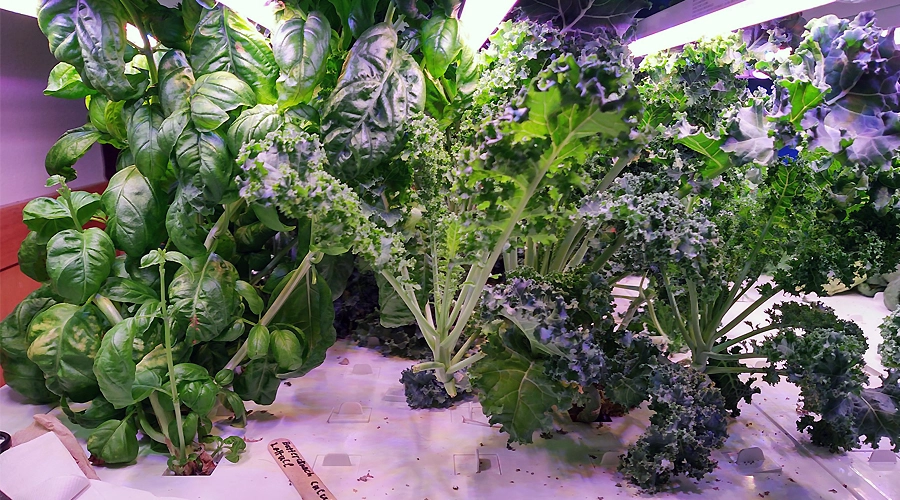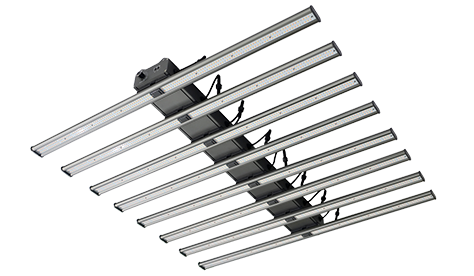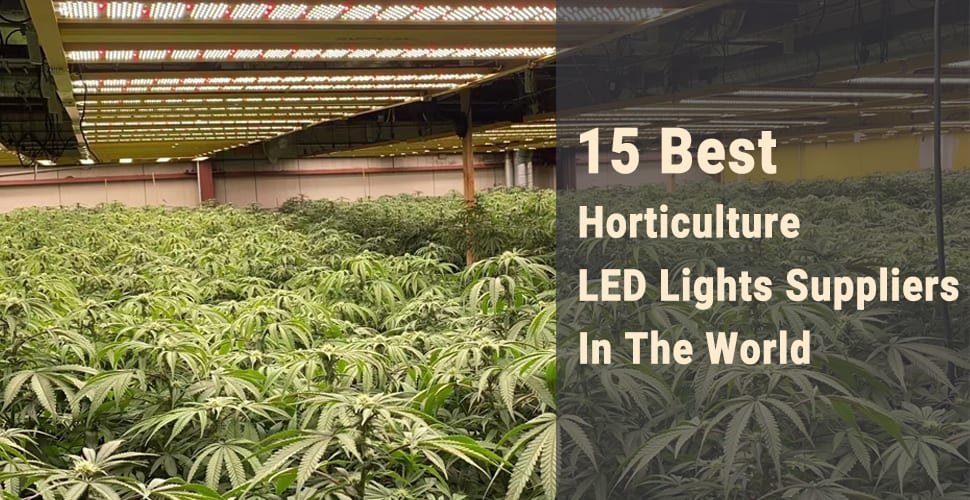Hydroponics er en utmerket innendørs plantingsmetode. Det kan være utfordrende, men likevel hyggelig og svært gunstig. Du kan få forskjellige problemer innen hydroponics, men du kan lære mye av bøker, artikler og veiledningsvideoer.
En av de beste måtene er imidlertid å lære av våre feil og tilegne seg ferdighetene for å unngå eller lykkes med å løse disse problemene. Jeg har samlet denne artikkelen for å introdusere de vanligste problemene du kan møte.
Jeg håper dette innlegget kan hjelpe deg med å unngå feil og utstyre deg med kunnskapen til å håndtere utfordringer med hell.
Hydroponics -system lekker
Systemlekkasjer kan føre til næringstap, og påvirke planteveksten. Det er forskjellige grunner til systemlekkasjer:
- Lekkasjer kan oppstå ved et hvilket som helst tilkoblingspunkt eller ventil i systemet.
- Blokkeringer i systemet kan også forårsake lekkasjer, for eksempel rotblokkeringer i NFT -systemer, som fører til vannstrømning og overløp. Hvis reservoaret i systemet ditt ikke kan inneholde alle næringsløsninger, kan lekkasje oppstå.
- Strømbrudd eller pumpesvikt kan føre til ryggflyt og overløp i reservoaret.
Løsning
Test systemet før du planter planter. Stram alle ventiler og sørg for at alle tilkoblinger er festet sikkert.
Kontroller regelmessig systemet ditt for problemer, for eksempel overdreven rotvekst eller tresko i avløpsrør eller utsalgssteder.
Forsikre deg om at det valgte reservoaret har plass til alle næringsløsningene i systemet, ikke bare kapasiteten under systembruk.
Skadedyr
Planter kan lide av dårlig vekst eller til og med død på grunn av angrep fra patogener, skadedyr og andre inntrengerne.
Liste over skadedyr: soppgnater, bladlus, hvitfluer, thrips, edderkoppmidd.
Hvis du trener innendørs hydroponics, er sjansene for å kjempe skadedyr mye lavere sammenlignet med utendørs dyrking. Imidlertid, hvis du møter skadedyr, er det enda verre fordi det betyr at de er rett i huset ditt!
Løsning
Klissete feller, eplecidereddik, såpevann og til og med elektroniske insektfeller kan bidra til å redusere alvorlighetsgraden av skadedyrangrep.
Noen ganger kan skadedyrproblemer imidlertid eskalere til det punktet hvor du må slå av hagen og desinfisere den grundig. Det er uheldig, men det skjer av og til.
Hvis du flytter utendørs planter innendørs om høsten, må du være ekstremt forsiktig under overgangen. Dette er en viktig vei for å introdusere skadedyr i hjemmet ditt.
Det er best å holde innendørs planter innendørs og utendørs planter utendørs for å unngå skadedyrproblemer med hydroponics.
Alger
Jeg er sikker på at enhver gartner i prosessen med hydroponisk vekst har taklet alger på et tidspunkt.
Hydroponisk vekst gir et ideelt miljø for alger fordi det engasjerer seg i algetrioen: vann + lys + næringsstoffer = algevekst.
Løsning
Vi kan ikke fjerne vann fra ligningen. Næringsstoffer er avgjørende, men det er viktig å bruke dem til rett tid og i riktige mengder. Dette etterlater oss med lys.
Så vi må sørge for at unødvendig lys ikke skinner ut i vannet i plantebeholderen. Dette er en metode for å redusere lyslekkasje som kan føre til overdreven algevekst.
Rotrot
Rotrot: Rotrot oppstår på grunn av faktorer som rothypoksi, overskudd av næringsstoffer, dårlig vannkvalitet, etc. Det fører til forfall av røtter, noe som påvirker plantens evne til å absorbere vann og næringsstoffer.
Dårlig rotvekst: Utilstrekkelig oksygen, næringsmangel, dårlig vannkvalitet, etc., kan føre til dårlig rotvekst, noe som påvirker plantens evne til å absorbere vann og næringsstoffer.
Hvis du observerer noen brune, klissete eller foul-luktende røtter, lider planten sannsynligvis av rotrot.
Løsning
Rotrot er vanligvis forårsaket av sopp fra Phytophthora -slekten og blir vanligvis tydelig i de senere stadier av planteutvikling. Ikke bare fokuser på anlegget; Ikke glem røttene!
- Fjern de berørte belgene og skyll de påvirkede røttene med rent vann.
- Trim de berørte røttene ved hjelp av rene beskjæringssaks.
- Trim døde eller visne blader.
- Rengjør plantebeholderen og tilsett ferske næringsstoffer.
- Forsikre deg om at vannpumpen fungerer ordentlig og ikke tilstoppet av røtter.
Ikke overvåke vannkvaliteten
Dårlig vannkvalitet: Urenheter og patogener i vannet kan føre til dårlig plantevekst eller til og med død.
Høy vanntemperatur: Forhøyet vanntemperatur påvirker plantefotosyntesen og respirasjonen, noe som fører til dårlig vekst.
Lav vanntemperatur: Lav vanntemperatur hindrer rotveksten, noe som resulterer i dårlig total plantevekst.
Løsning
Bruk EC -målere og pH -målere for å utføre ukentlige vannkvalitetstester på ditt hydroponiske system!
Hvis du nettopp kommer i gang i den fantastiske verdenen av innendørs hydroponics, kan du begynne med det rette fundamentet - teste vannet ditt regelmessig.
Ikke overvåke og justere pH -nivået
PH -nivået i næringsløsningen er en av de mest kritiske faktorene i hydroponisk dyrking.
På grunn av faktorer som temperatur, hastigheten på næringsabsorpsjon av planter, tilstedeværelsen av sykdommer, overdreven fordampning, etc., kan pH -nivået gjennomgå betydelige endringer i løpet av timer eller dager.
Løsning
Når du praktiserer hydroponics, må du Overvåk pH i næringsløsningen.
I et nytt system eller etter nyere endringer, kan det hende du må teste og justere pH daglig.
I et stabilt system kan du redusere testingen til en eller to ganger i uken.
Når du får erfaring med hydroponisk dyrking, vil du lære faktorene som kan påvirke pH -nivåene og passende testfrekvens.
Overbefolkning
Når du har din første innendørs smarte hage, er det en uforklarlig spenning. Du ser vekstpotensialet skjult i de søte små hullene, og du vil fylle dem alle!
Hvis du tilfeldig fyller hvert hull med en hvilken som helst plante du har lyst på, vil du støte på en katastrofe: noen ting blir høy, noen busk ut, noen holder seg lave og noen høster raskere enn andre.
Du må ta en pause og tenke på hva du vil vokse.
Løsning
En god generell regel er ikke å plante i hvert eneste hull. Hvis du ikke bruker en, dekk den opp!
Å ikke bruke alle tilgjengelige hull er et forebyggende tiltak mot fremtidig overbefolkning.
Kanskje du føler deg nølende med å kaste bort for mye plass i frøplanten. Men du vil være takknemlig for at du ikke overfylte, spesielt når planter vokser tett, spesielt når det gjelder tomater og jordbær.
Feil næringssammensetning
Næringsmangel: Utilstrekkelig essensielle næringsstoffer for plantevekst kan føre til dårlig utvikling, gulning av blader og bladfall.
Overskudd av næringsstoffer: Overdreven næringsnivå kan hindre rotvekst, forårsake bladdeformasjon og til og med føre til plantedød.
Næringsubalanse: ulik proporsjoner av næringsstoffer kan føre til dårlig plantevekst.
Løsning
Forsikre deg om at du kjøper næringsstoffer som er spesielt designet for hydroponics.
Å tilsette næringsstoffer som ikke er egnet for hydroponiske systemer, kan brenne planter, bli altfor utvannet eller til og med skade vannpumpen!
Ved å bruke næringsoppløsninger av høy kvalitet som Aerogarden-næringsstoffer, kan du øke hagenes næringsstoffer, næringsstoffer i Cal-Mag eller andre gi rikelig ernæring for planter. Jeg vil ikke anbefale hvilken som er den beste - jeg overlater den avgjørelsen til deg.
Pumpe eller rørblokkering eller skade
En skadet eller blokkert vannpumpe kan forstyrre næringssirkulasjonen i de fleste systemer, noe som påvirker planteveksten.
For aeroponiske systemer er dyseblokkeringer vanlige over tid. Imidlertid møter ikke Wick- og DWC -systemer vanligvis ikke dette problemet.
Dette problemet er relativt enkelt å løse. I de fleste tilfeller blir pumpen tilstoppet av røtter, og det er grunnen til at noen mennesker ofte trimmer røtter.
Jeg har ikke prøvd dette selv, og i løpet av et år med hydroponics har vannpumpen min bare blitt blokkert av røtter en gang. Så om du skal trimme røtter avhenger av din egen erfaring.
Løsning
Hvis du regelmessig sjekker helsen til røttene dine, vil sjansene for at pumpen blir tilstoppet av røtter bli betydelig redusert.
Å bruke feil næringsstoffer kan også tette pumpen din. Rør påvirkes vanligvis av røtter, men alger eller voksende slam kan vikle dem inn.
Vurder å kjøpe pumper eller luftpumper med innebygde alarmer; Hvis det oppstår en blokkering, vil alarmen høres.
Regelmessig rengjøring og bruk av praktiske rørrensere skal bidra til å forhindre dette problemet.
Velge feil planter
Jeg tror vi alle har lyst til å prøve å dyrke alle typer avlinger.
Noen planter trives imidlertid i hydroponisk: bladgrønne greener, urter, paprika, jordbær og grønnkål. Mens andre kan slite: gulrøtter, blomkål, gresskar.
Løsning
Planter som urter, bladgrønne greener, tomater, paprika og jordbær er godt egnet for hydroponikk. Når det gjelder tomater, må du forsikre deg om at du velger en bestemmelse eller busk -variasjon.
Hvis du er ny på hydroponics, kan du begynne med bladgrønne greener. Når du har lært noen teknikker, kan du prøve å skyve noen grenser.
Mangel på rengjøring
Unnlatelse av Rengjør et hydroponisk system kan føre til forskjellige spørsmål som rotrot, påvirke plantehelsen og vekst.
En del av rengjøringsprosessen er å forhindre alger, rørblokkeringer, sykdommer og skadedyr fra å ta rot i systemet.
Mens noen hydroponiske systemer er designet for å fremme gunstig bakterievekst, tror jeg, for de fleste hydroponiske oppsett av hjemmet, er det best å unngå patogener ved å rengjøre systemet og omegn rundt.
Løsning
Hold området rundt dyrkets tårn eller planteskap rent og organisert.
Tapper systemet hver 2-3 uke, skyll det voksende mediet og røttene med vann, og rengjør reservoaret, vannpumpen og rørene.
Plantesykdommer
Når sykdom rammer hydroponiske planter, kan det være en trist dag.
Grå mugg: forårsaket av overdreven fuktighet, kan den reguleres ved å innføre en liten oscillerende vifte.
Pulveraktig mugg: Nesten hver gartners mareritt, er forårsaket av lite lys, høy luftfuktighet og lave temperaturer. Prøv å lyse lysene (hvis mulig), beskjær blader for å skape plass og fremme luftstrøm, og en svingende vifte kan også hjelpe.
Vilt sykdom: Det er mange typer visne sykdommer, ofte plager auberginer, tomater og paprika. Hvis du begynner å se nedre bladene krølle og visne, vil du vite at den blir slått. Dessverre er det beste handlingsforløpet å fjerne det berørte anlegget, desinfisere det og starte systemet på nytt.
Løsning
Forebygging er nøkkelen: Oppretthold systemets renslighet, desinfiserer det regelmessig, og unngå avl av patogener.
Tidlig oppdagelse, tidlig behandling: Når du har lagt merke til plantesykdommer, må du ta raske tiltak for behandling.
Bruk soppdrepende midler: Vanlige soppdrepende midler inkluderer kaliumpermanganat, penicillin, streptomycin, etc. (for bakteriesykdommer).
Kjøpe billige eller uriktige dyrkelys
Jeg hadde en gang en venn som delte sine feil i innendørs voksende lys. Han kjøpte billige lys som ikke kunne oppfylle kravene eller feil type lys, noe som resulterte i lave utbytter av frukt og grønnsaker.
Uten tilstrekkelig og riktig belysning kan systemets ytelse være veldig skuffende. Utilstrekkelig lys påvirker plantefotosyntesen, noe som fører til dårlig vekst.
Løsning
For de fleste anbefaler jeg på det sterkeste å bruke LED -vekstlys.
Når du kjøper LED Grow Lights, ikke gå for det billigste alternativet. Gjør litt research, og kjøp lys av høy kvalitet med riktig bølgelengde og tilstrekkelig mengde til å generere passende lys for systemet ditt.
Sørg for å kjøpe nok dyrke lys for systemet ditt. En god tommelfingerregel er å beregne kvadratmeter av taket i det voksende området og deretter multiplisere det med 65.
Eksempel:
Voksende område er 4 fot x 6 fot.
Totalt areal = 24 kvadratmeter.
24 kvadratmeter x 65 = 1560 watt.
For optimal vekst trenger du cirka 1560 watt belysning for dette området. Dette er en generell tommelfingerregel som jeg følger.
Lav luftfuktighet
Lav luftfuktighet påvirker plantens transpirasjon, noe som fører til dårlig vekst.
Løsning
Øk fuktigheten: Sprayvann rundt plantene eller legg vannskåler eller luftfukter i nærheten av dem for å legge fuktighet i luften.
Velg passende planter: Velg planter som ikke krever høy luftfuktighet for enkel hjemmelagelse.
Forbedre ventilasjon: Plasser hydroponiske planter i godt ventilerte områder. Trim døde grener og blader for å forbedre ventilasjonen.
Konklusjon
I prosessen med å bruke hydroponics for å dyrke planter, har jeg faktisk gått gjennom mange studier og feil.
Mange av problemene jeg møtte kunne ha blitt unngått med riktig planlegging og oppmerksomhet på detaljer.
Jeg vil gjerne høre tankene dine hvis du møter noen problemer eller har noen tips å dele mens du bruker hydroponics for plantedyrking. Jeg håper denne artikkelen hjelper deg å unngå utfordringene jeg møtte da jeg først begynte. Legg gjerne igjen en kommentar nedenfor eller bruk kontaktskjemaet.
Jayes
Som Digital Marketing Manager hos AUXGROW kombinerer Jayes en lidenskap for hydroponiske systemer og ekspertise innen LED-vekstlys. Med praktisk erfaring og en dyp forståelse, guider Jayes deg gjennom en verden av bærekraftig dyrking.






